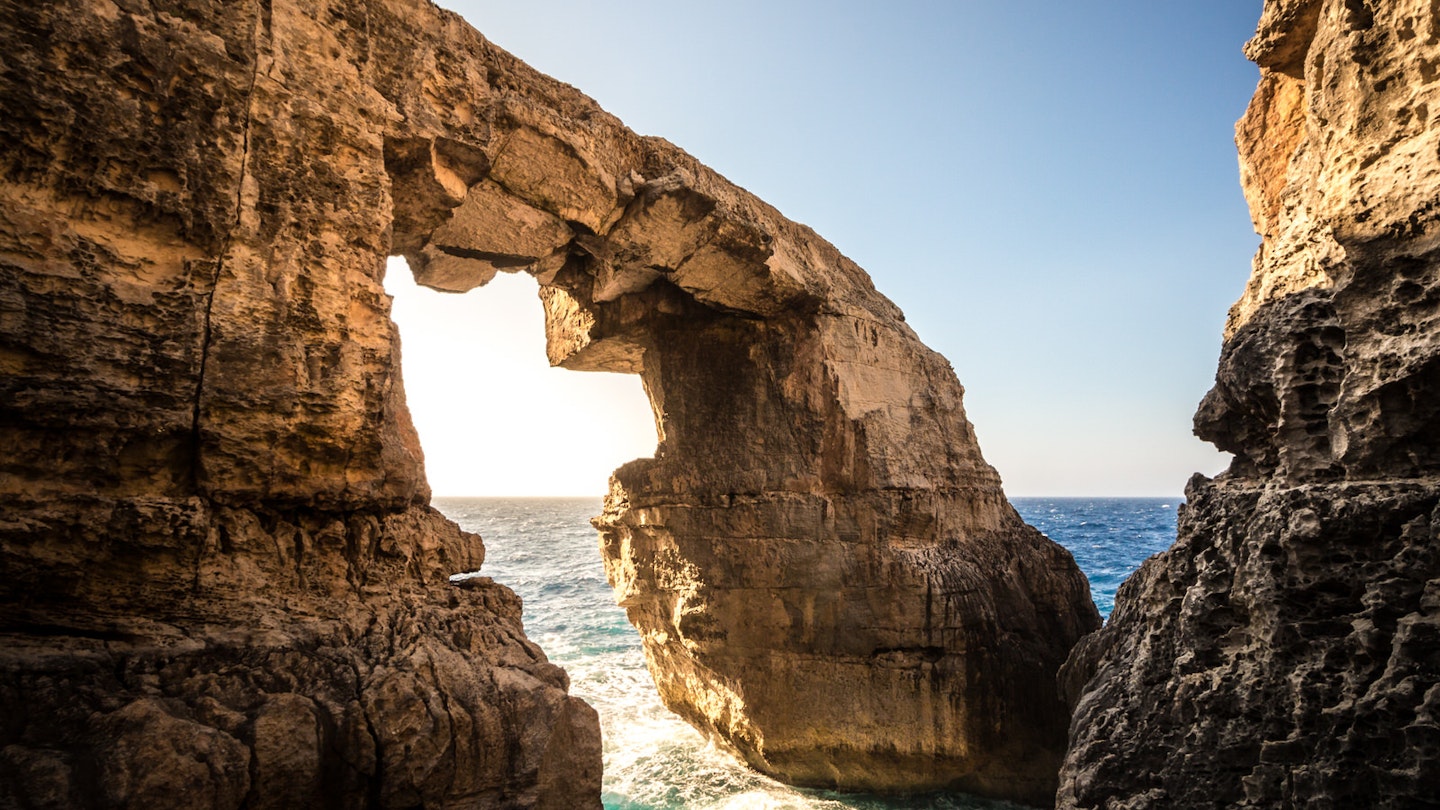Discover Gozo: A Weekend in Malta’s Gem
Small but perfectly formed, the Maltese island of Gozo has plenty of historical and natural treasures to fill a long weekend and more. Its diminutive, Manhattan-equalling size ensures that getting from one site to another, whether by foot, bicycle, taxi, or public bus, is a breeze.
Wied il-Mielaħ & Wied il-Għasri: Gorgeous Gorges with Activities Aplenty
With cliff-bound inlets, dramatic rock arches, and picturesque beaches, the jagged and somewhat remote northwest coast of Gozo offers numerous outdoor adventure opportunities, something Gozo is becoming known for. Two of the most inspiring sites are Wied il-Mielaħ and Wied il-Għasri. The former is an incredible natural rock formation that arches out over the sea – making it possible to cycle and walk over it, with bolts in place for rock climbing on its near-vertical face. Further east, the narrow inlet of Wied il-Għasri is a fantastic place to swim or snorkel, and one can lounge on its lovely shingle beach during calm sea conditions. Gozo Adventures operates a mountain bike tour from the town of Għarb to Qbajjar, incorporating both sites and captivating cliff-top panoramas. Hiking between the gorges is also a wonderful option.
Il-Kastell: A Historic Fortress Towering Over Victoria
Not all of Gozo’s breathtaking vistas are found along sea cliffs – some of the best are located atop the walls of Il-Kastell. This 15th-century fortress – built over Bronze Age defenses – stands tall over the island’s capital Victoria (known locally as Rabat) and has a long history of protecting Gozitans from raiders. Incredibly, it was common practice for all the islanders to take nightly refuge in the fortress until well into the 17th century. It’s worth tearing yourself away from the lofty views from the ramparts to explore the modern visitors’ centre, which has been beautifully integrated into the fort’s historical structure.
Ġgantija Temples: The World’s Oldest Free-Standing Structures
Outdating the Pyramids of Giza by a millennium, the megalithic Ġgantija Temples proudly stand over southern Gozo from their elevation atop a gentle ridge south of Xagħra. The impressive visitor centre at the site entrance goes into great detail about the history of these temples, which are renowned as the oldest free-standing structures in the world. Experiencing them in person, however, offers a unique feeling of connection to the past.
As you walk down the elevated boardwalks to the two main temples, your initial glimpses may remind you of Stonehenge; large monoliths, sometimes precariously balanced, stacked to form a circle. Once you cross into either temple, your first impressions will be eclipsed by the intricate details of the internal layout. Each temple is divided into five semi-circular niches, containing various altars – some benches, others trilithon in design – as well as carvings whose purposes seem to range from decorative to functional. An example includes the eight holes in the threshold slab of the southern temple believed to have held libations during rituals. The outer walls were constructed using harder coralline limestone to withstand the elements while the inner walls were created from softer globigerina limestone. The sheer size of the megaliths in the outer wall (the largest weighs 57 tonnes) is truly impressive, especially considering the effort required to position them approximately 5600 years ago.
Dwejra’s Inland Sea: A Window Into the Great Blue
As you walk down the hill towards the Inland Sea near Dwejra in the far west of Gozo, the scene that unfolds appears almost surreal. How does this quaint and colorful fishing village sustain itself on the shore of such a small lagoon? A glimmering light at first hints at something more, and as you approach the water’s edge, the shadow at the base of the cliff reveals a long tunnel leading into the Mediterranean Sea. Just wide enough for small fishing vessels, this tunnel allows fishermen to transport visitors for picturesque tours.
Cruising into the darkness presents a surreal experience, especially as you near the exit, where the crystal-clear water reflects a stunning cobalt hue. Following the base of the towering seaside cliffs, cruises also visit the site of the former Azure Window, a natural rock arch that sadly collapsed into the sea due to erosion in March 2017.
After returning to shore, a short hike leads to a viewpoint overlooking the Blue Hole. Approximately 10m in diameter and 25m deep, this limestone chimney connects to the sea below, presenting an incredible spot for diving and snorkeling. The vibrant blue hues here are worth capturing for social media!
Qbajjar Salt Pans: Harvesting Today as in Centuries Past
Over the centuries, the limestone beds forming the foreshore west of Qbajjar Bay on Gozo’s north coast have been shaped into shallow pools for salt harvesting. During hot periods, seawater fills the pools and evaporates, leaving behind precious salt. A few families still operate the salt pans today, and visitors can purchase fresh salt from them at small roadside stands.
Matt Phillips travelled to Gozo with support from the Malta Tourism Authority. iBestTravel contributors do not accept freebies in exchange for positive coverage.




